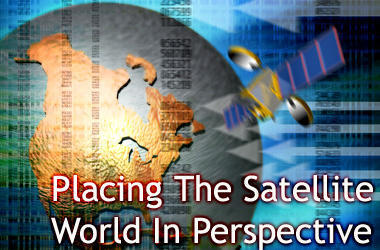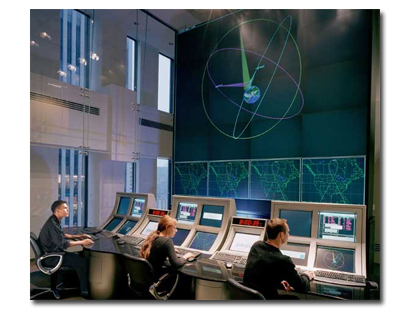|
|
 |
Knowledge Is Key
For Intelligent Decisions
Satellite Logic is a leading,
authoritative source of information in
the Satellite Industry. Located in the
heart of the Silicon Valley, Satellite
Logic provides one of the most
valuable and comprehensive
knowledge bases on the Satellite
market! This is a primary Worldwide
information center which enables our
clients to analyze, evaluate, inquire
and select their best tailored
solutions. Our company sets the
industry standards for targeted
buying leads, reflecting a dramatic
advance over traditional marketing
solutions.
|
|
|
 |

The development of the satellite radio technology took many years.
Engineers had to figure out how to squeeze dozens of individual
channels into a relatively small amount of bandwidth and come up
with reliable methods of beaming signals from thousands of miles in
space to roving antennas smaller than tennis balls. They also had to
develop inexpensive circuitry, or chipsets, to enable receivers to
decode the satellite signals, which are encrypted to prevent
reception by non-subscribers.
So how does this technology work? Sirius and XM produce live and
taped programming, ranging from music and entertainment to sports,
news and weather alerts. The programming is beamed to satellites
from dishes operated by each company. The satellites broadcast the
signal back to Earth, where it's picked up directly by receiver units.
The signal is also received and rebroadcast by repeater stations in
metropolitan areas. XM uses two geostationary satellites that remain
constantly above the United States. Sirius uses three satellites, two
of which are always over the country.
A receiver buffers the broadcast for a few seconds, so if it loses the
satellite signal it can use one from a repeater station, helping insure
a continuous broadcast. Overpasses and tall building are particular
problems. Sirius and XM each took somewhat different approaches,
although the end result, from the user's perspective, is the same:
more than 100 channels available virtually anywhere in the
continental United States.

XM uses two very powerful satellites floating in space directly above
the equator. The spacecraft are in geostationary orbit. They appear
from the ground to remain in fixed perches, because they move
around the Earth at the same speed the planet is rotating.
Geostationary satellites are commonly used for all sorts of space-
based communications because they enable use of inexpensive,
fixed antennas. Satellite TV and Internet systems are two examples
of consumer-oriented technologies that use this type of satellite.
Since geostationary spacecrafts are above the equator, terminals on
the ground must have a decent view of the southern sky to receive
signals from them. This posed a challenge for XM, since listeners in
cars often pass by obstacles, such as buildings, foliage or hills, which
can block geostationary satellite signals. XM's solution is a network
of repeaters and antennas on buildings and other sites that receive
satellite signals from an optimally placed antenna and retransmit
them. The repeaters are located primarily in built-up areas, where
loss of the satellite signal is most likely to occur.
Each XM receiver is equipped to receive signals from both of the
company's Boeing 702 satellites and a repeater simultaneously. As
long as one of the sources is available, the radio will play without
interruption. In addition, the receivers have buffers that store
programming for several seconds, allowing operation to continue
even if no signal is available momentarily.
Sirius uses a trio of Loral FS1300 satellites in unique elliptical orbits
in an effort to avoid the problems posed by geostationary satellites.
The orbits, shaped like figure eights, allow the satellites to appear
higher in the sky than XM's, cutting down on the potential for a
listener to be out of range of a satellite signal, thus allowing Sirius
to have a much smaller number of repeaters.
Sirius' repeater network also avoids the need for specialized
antennas that can track the company's non-geostationary satellites
as they move about the sky. Sirius feeds its repeaters using capacity
on a geostationary satellite leased from a traditional satellite
operator. Listeners can't tell that the signals they receive via the
repeaters do not travel over Sirius' fleet of satellites.
The Sirius satellites each spend about 16 hours over the United
States, then whip around the other side of the Earth and return
eight hours later for another stint hovering over Sirius' listening area.
As for the ground studios, XM and Sirius both operate digital
broadcast centers that combine dozens of individual recording
studios with huge amounts of storage to hold hundreds of
thousands of compact discs worth of music in digital format.
Programmers just point and click at the material they want to play,
and it airs directly from the storage system at the appointed time.
During transmission, the system also adds a short description of the
music or other material for display on a small receiver screen. That is
one unique advantage to satellite radio, you can find out the artist
and song title as each piece of music plays.
The 22 terabytes of storage capacity at XM's facilities in Washington
can hold about 250,000 CDs. Sirius, located in mid-town Manhattan
have about seven terabytes of storage. While that is less than XM
has, it's more than plenty. Both companies also maintain large
collections of CDs to augment their digital libraries. They also
retransmit programming that originates elsewhere, such as news,
sports and comedy channels, and maintain studios where artists
perform live.
Another, less visible key to satellite radio is digital compression, a
technique to use radio spectrum as efficiently as possible. Both
satellite radio broadcasters use sophisticated algorithms to squeeze
as much material as they can into the available bandwidth without
causing audio quality to degrade. XM and Sirius are each allocated
12.5 megahertz of radio spectrum by the U.S. Federal
Communications Commission.
|
|
|
|
